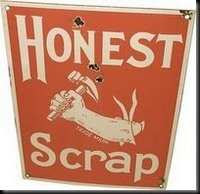

Meet Whaler, above. Whaler came it at 25 lbs. His estimated correct weight is 10-12 lbs. The cat posts on Whaler are ALL about getting him down to proper weight and keeping his health sound in the process.
Feline obesity is becoming a more common intake problem in our rescue. MORE cats are coming in clinically obese. Not only will we not adopt them out in this state (meaning, ultimately, we can take fewer cats in, so more cats will die in shelters), we are increasingly concerned as to the why and how this is occurring..
I promised to post tracks on our newest obese cat, Whaler (the 25 lb. cat), as we get him down a trim, healthy cat. I didn't forget. I have written pages and pages and decided to do this in stages. Whaler is still in food transition while doing weight loss. This is one of those "I hope it doesn't go that way" situations. He is a worst example, but, actually, common.
For any of you that are rescues, some of this you will know much of this and some not. I am sure you have some great techniques, hints, information and ideas, as well. Please share them as we move along. We can never know enough!
For those of you new to this, there is a lot to know about how to safely and successfully reduce your cat's weight. But you can do it! Once you do the reading, get organized and set up, do the weight and/or calorie calculations, you are on your way. This is not to say you won't have problems and challenges on the way. You may well have them.
An obese cat isn't a healthy cat. And for those of you determined to have a healthy cat, then watch over months as we chart Whaler's path back to good cat weight and good cat health.
This is, however, not something to read and implement in a day. Please don't do that. It is the worst thing you can do. Make the decision now, understand the mechanics, then get prepared, then do it. If it takes you a month to do that, great.
Your cat didn't get obese in a day, and you cannot expect that to change in a day, either. So chill! Give yourself the time and breathing room needed to approach this rationally and properly.
It is important that you understand what you are doing, and why, and that you seek guidance of a veterinarian (and for this kind of thing, a good veterinarian with an interest in cat nutrition might be helpful) and that you make a decided choice to do it with full involvement, knowledge and care.
Please read and understand this fine article authored by Dr. Lisa Pierson DVM on cat obesity and WHY it is important to get that weight off. She also has other very excellent sections on cat health, and diet.
Calculations
This section is all about calculations which we think we have made pretty simple. You will constantly need to do these calculations when your cat is on a diet, so knowing how to do them, and doing them (which is just second nature after a while!) is critical.
Maintenance calories for a cat
Maintenance calculations are vital for weight loss of a cat, especially in the food transitioning weeks which are the first many weeks of a cat's diet.
Many cats do not change foods easily (and thankfully some do!) and this initial stage is very critical to do right for the cat's health.
Calorie Calculation for weight maintenance:
(13.6 x cat's weight) +70 = calories per day (cal/day). So, we take 13.6 and multiply it by the cats weight. Once we have that figure, we add 70.
For example, Whaler (25 lbs):
(13.6 X 25) + 70 =
340 + 70 = 410 calories/day
2% Weekly Weightloss Calculation
Weigh the dieting cat on the first day of the week of EVERY week. In other words, you take the cat's weight on a digital scale (has to be an accurate digital... get a human scale) once every 7 days. 2% of that weight, that week, can be lost. NO more. The following week, the weight you start with is different, thus the amount the cat can lose, assuming they lost some weight, is less.
Weekly 2% calculation:
For example, Whaler (25 lbs.). There are two easy steps in this calculation:
1. Convert pounds to ounces since this is the scale we will be working with:
1 pound (lb.) = 16 ounces (oz.)
Whaler's weight in ounces:
25 lbs. X 16oz/lb. = 400 oz.
2. 2% of 400 oz = 8 oz can be lost, but no more, the first week.
In the following week, you take the original oz. (400 for Whaler), subtract the oz. he lost that week, then take 2% of that figure for the next week.
For example, if Whaler lost 4.2 oz. in the first week, then:
400 oz. - 4.2 oz = 395.8 oz. (current weight)
395.8 would be the starting weight for week 2, and that week's 2% would calculate like this:
2% of 395.8 = 7.9 oz. Whaler can lose, maximum, the second week.
A cat must eat to SAFELY transition to another diet. This is NOT a cold-turkey diet. The cold-turkey approach could harm your cat or make them severely ill. Cat's are not humans, and their biology doesn't work like a human body so dispense now with any comparison.
And get yourself on a cat-treat diet: No more treats for the cat!
Stay Tuned for Part 2: Transitioning Your Cat Onto A High Quality Wet Food
How do we find middle ground?
6 years ago










|